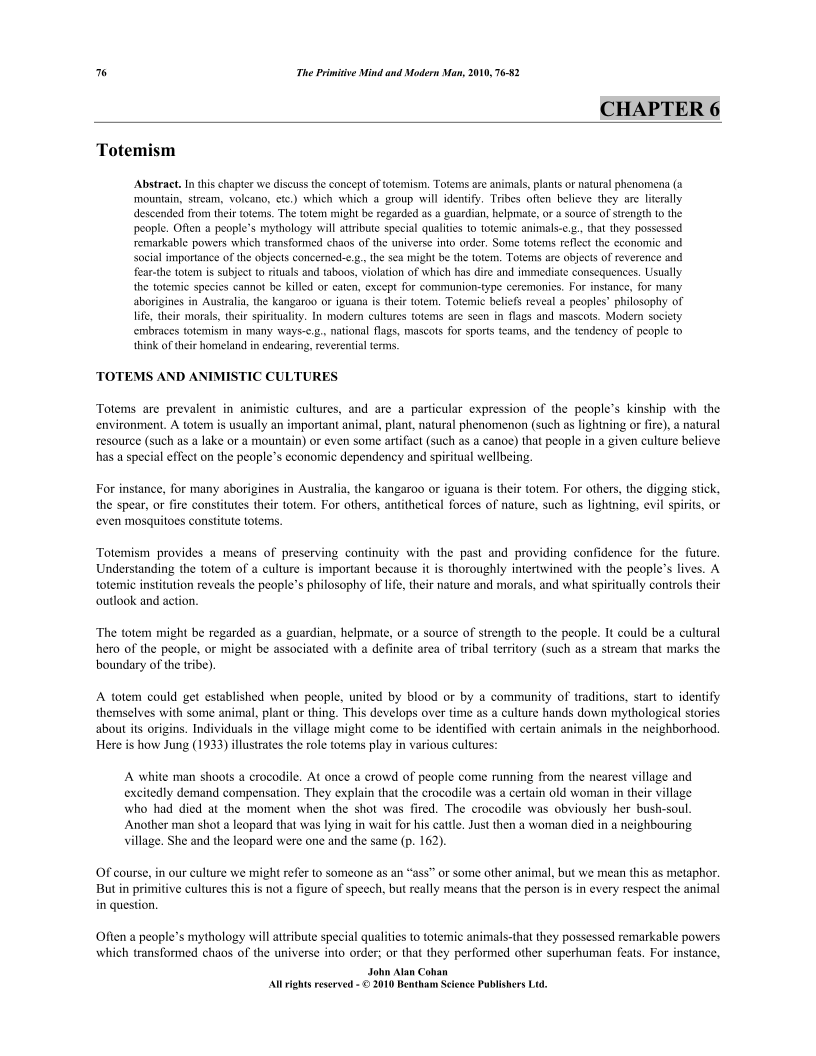Totemism

- By John Alan Cohan
- Source: The Primitive Mind and Modern Man , pp 76-82
- Publication Date: March 2012
- Language: English
Totemism, Page 1 of 1
< Previous page | Next page > /docserver/preview/fulltext/9781608050871/chapter-6-1.gif
In this chapter we discuss the concept of totemism. Totems are animals, plants or natural phenomena (a mountain, stream, volcano, etc.) which which a group will identify. Tribes often believe they are literally descended from their totems. The totem might be regarded as a guardian, helpmate, or a source of strength to the people. Often a peoples mythology will attribute special qualities to totemic animals-e.g., that they possessed remarkable powers which transformed chaos of the universe into order. Some totems reflect the economic and social importance of the objects concerned-e.g., the sea might be the totem. Totems are objects of reverence and fear-the totem is subject to rituals and taboos, violation of which has dire and immediate consequences. Usually the totemic species cannot be killed or eaten, except for communion-type ceremonies. For instance, for many aborigines in Australia, the kangaroo or iguana is their totem. Totemic beliefs reveal a peoples philosophy of life, their morals, their spirituality. In modern cultures totems are seen in flags and mascots. Modern society embraces totemism in many ways-e.g., national flags, mascots for sports teams, and the tendency of people to think of their homeland in endearing, reverential terms.
-
From This Site
/content/books/9781608050871.chapter-6dcterms_subject,pub_keyword-contentType:Journal -contentType:Figure -contentType:Table -contentType:SupplementaryData105

